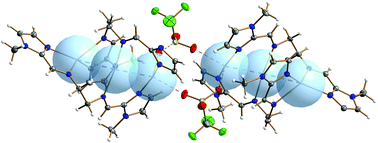Argentophilic interactions in multinuclear Ag complexes of imidazole containing Schiff bases†
Abstract
The reactions of imidazole groups containing

* Corresponding authors
a
Department of Chemistry, University of Eastern Finland, Joensuu Campus, P.O. Box 111, Fi-80101 Joensuu, Finland
E-mail:
Matti.Haukka@uef.fi
Fax: +358 13 251 3390
Tel: +358 50 400 2079
The reactions of imidazole groups containing

 Please wait while we load your content...
Something went wrong. Try again?
Please wait while we load your content...
Something went wrong. Try again?
L. Koskinen, S. Jääskeläinen, L. Oresmaa and M. Haukka, CrystEngComm, 2012, 14, 3509 DOI: 10.1039/C2CE06550A
To request permission to reproduce material from this article, please go to the Copyright Clearance Center request page.
If you are an author contributing to an RSC publication, you do not need to request permission provided correct acknowledgement is given.
If you are the author of this article, you do not need to request permission to reproduce figures and diagrams provided correct acknowledgement is given. If you want to reproduce the whole article in a third-party publication (excluding your thesis/dissertation for which permission is not required) please go to the Copyright Clearance Center request page.
Read more about how to correctly acknowledge RSC content.
 Fetching data from CrossRef.
Fetching data from CrossRef.
This may take some time to load.
Loading related content
